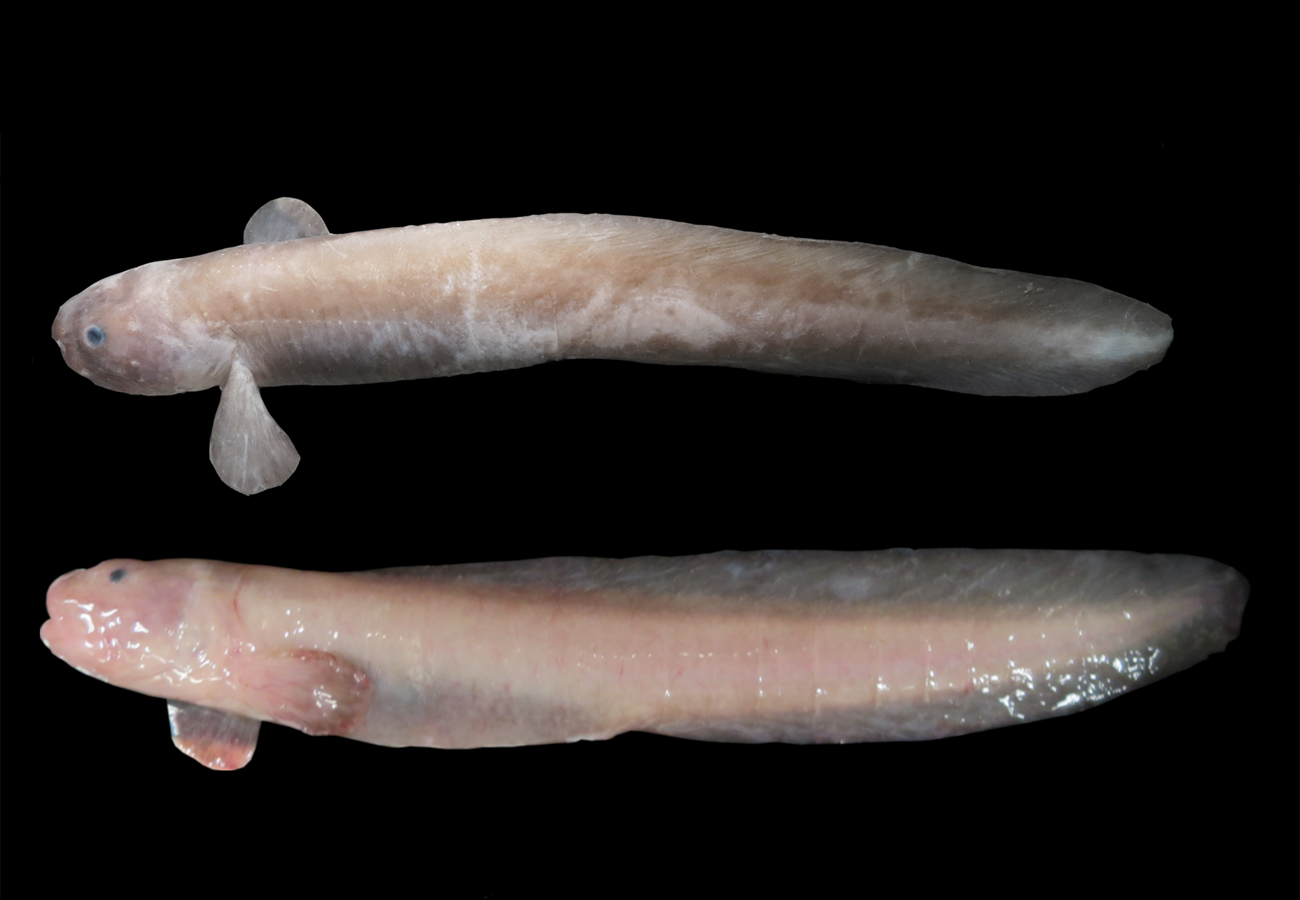Abstract
We describe a new genus in the mite family Melicharidae, Mycomelichares Mašán & Joharchi gen. nov., to accommodate two new species, Mycomelichares polypori Mašán & Joharchi sp. nov. and Mycomelichares reductus Mašán & Joharchi sp. nov. on the basis of specimens collected on wood-decaying fungi and/or mycophagous beetles of the genera Triplax Herbst and Tritoma Fabricius (Coleoptera: Erotylidae) in Slovakia and European part of Russia, respectively. Moreover, two previously described Proctolaelaps species—P. cyllodi Samšiňák, 1960 and P. slovacus Mašán, 1998 are transferred to the newly established genus. The new genus is characterized by specific characters in tritosternum (enlarged and brush-shaped, having their laciniae thickened, basaly fused and distally densely pilose), chelicerae (slightly dish-shaped digits with long, narrow and sharp denticles), ventral hypostome (setae h1 enlarged, thickened and distally flattened), setation (tendency towards placement of R series setae on soft integument, and reduction of some setae on idiosoma and legs), and unusual ecological specialisation on fungal substrates. Mycomelichares polypori sp. nov. is adapted to the life in sporophores of the basidiomycete bracket fungus, Polyporus squamosus (Polyporaceae). Mites of this species can be abundantly found on the lower fertile surface of the fungus, including large spore-bearing pores. Furthermore, keys to the melicharid genera reported from Palaearct, and the species of the genus are provided.
References
Athias-Henriot, C. (1973) Observations sur les genres Neojordensia Evans et Orthadenella n.g. en Europe Occidentale (Gamasides, Dermanyssina, Ascidae). Acarologia, 15, 18–32.
Berlese, A. (1923) Centuria sesta di Acari nuovi. Redia, 15, 237–262.
Bregetova, N.G. (1977) Family Aceosejidae Baker and Wharton, 1952 (sensu Evans, 1958). In: Ghilyarov, M.S. & Bregetova, N.G. (Eds.), Key to the Soil-Inhabiting Mites. Mesostigmata. Nauka, Leningrad, pp. 169–226. [in Russian]
Evans, G.O. (1963) Observations on the chaetotaxy of the legs in the free-living Gamasina (Acari: Mesostigmata). Bulletin of the British Museum (Natural History), Zoology, 10, 275–303.
https://doi.org/10.5962/bhl.part.20528
Gwiazdowicz, D.J. (2007) Ascid Mites (Acari, Mesostigmata) from Selected Forest Ecosystems and Microhabitats in Poland. Wydawnictwo Akademii Rolniczej Im. Augusta Cieszkowskiego, Poznan, 248 pp.
Hering, E. (1838) Die Krätzmilben der Thiere und einige verwandte Arten, nach eigenen Untersuchungen beschrieben. Nova Acta Physico-Medica Academiae Caesareae Leopoldino-Carolinae Naturae Curiosorum, 18, 573–624.
Hirschmann, W. (1962) Gangsystematik der Parasitiformes. Teil 5. Gamasiden Rückenhaarbesttimmungstafeln von 260 Typhlodromus-Arten der Erde. Gänge, Chaetotaxie Porotaxie, Mundwerkzeuge von Typhlodromus und verwandten Gattungen von Proctolaelaps, Melichares, Lasioseius, Iphidozercon, Sejus, Rhodacarellus, Rhodacarus, Gamasellus, Veigaia, Macrocheles ivanovi. Erstversuch der Aufstellung eines Gangsystems der Gamasiden aufgrund der Gnathosoma-unterseite. Acarologie. Schriftenreihe für Verglenchende Milbenkunde, 5, 1–56.
Johnston, D.E. & Moraza, M.L. (1991) The idiosomal adenotaxy and poroidotaxy of Zerconidae (Mesostigmata: Zerconina). In: Dusbábek, F. & Bukva, V. (Eds.), Modern Acarology. Vol. 2. Academia, Prague, pp. 349–356.
Karg, W. (1993) Acari (Acarina), Milben. Parasitiformes (Anactinochaeta). Cohors Gamasina Leach. Raubmilben. 2 überarbeitete. Die Tierwelt Deutschlands, 59, 1–423.
Krantz, G.W. & Redmond, B.L. (1987) Identification of glandular and poroidal idiosomal systems in Macrocheles perglaber F. & P. (Acari: Macrochelidae). Experimental & Applied Acarology, 3, 243–253.
https://doi.org/10.1007/BF01270460
Lindquist, E.E. (1962) Mucroseius monochami, a new genus and species of mite (Acarina: Blattisociidae) symbiotic with sawyer beetles. The Canadian Entomologist, 94, 972–980.
https://doi.org/10.4039/Ent94972-9
Lindquist, E.E. (1995) Remarkable convergence between two taxa of ascid mites (Acari: Mesostigmata) adapted to living in pore tubes of bracket fungi in North America, with description of Mycolaelaps new genus. Canadian Journal of Zoology, 73, 104–128.
https://doi.org/10.1139/z95-013
Lindquist, E.E. & Evans, G.O. (1965) Taxonomic concepts in the Ascidae, with a modified setal nomenclature for the idiosoma of the Gamasina (Acarina: Mesostigmata). Memoirs of the Entomological Society of Canada, 47, 1–64.
https://doi.org/10.4039/entm9747fv
Lindquist, E.E., Krantz, G.W. & Walter, D.E. (2009) Order Mesostigmata. In: Krantz, G.W. & Walter, D.E. (Eds.), A Manual of Acarology. Third edition. Texas Tech University Press, Lubbock, Texas, pp. 124–232.
Mašán, P. (1998) Two new mesostigamatic mites (Acarina, Proctolaelaps, Hypoaspis) associated with erotylid and melolonthine beetles (Coleoptera: Erotylidae, Scarabaeidae) from Slovakia. Entomological Problems, 29, 19–22.
Moraes, G.J. de, Britto, E.P.J., Mineiro, J.L. de C. & Halliday, B. (2016) Catalogue of the mite families Ascidae Voigts & Oudemans, Blattisociidae Garman and Melicharidae Hirschmann (Acari: Mesostigmata). Zootaxa, 4112 (1), 1–299.
https://doi.org/10.11646/zootaxa.4112.1.1
Moraza, M.L. & Lindquist, E.E. (2011) A new genus of fungus-inhabiting blattisociid mites (Acari: Mesostigmata: Phytoseioidea) from Middle America, with a key to genera and subgenera of the subfamily Blattisociinae. Zootaxa, 2758 (1), 1–25.
https://doi.org/10.11646/zootaxa.2758.1.1
Samšiňák, K. (1960) Über einige forstwirtschaftlich wichtige Milben der Gattung Proctolaelaps Berlese 1923. Československá Parasitologie, 7, 297–307.
Santos, J.C., Rueda-Ramirez, D., Demite, P.R. & Moraes, G.J. de (2018) Ascidae, Blattisociidae and Melicharidae (Acari: Mesostigmata): zoogeographic analyses based on newly available databases. Zootaxa, 4377 (4), 542–564.
https://doi.org/10.11646/zootaxa.4377.4.4
Trach, V.A., Khaustov, A.A. & Lindquist, E.E. (2019) A new unique species of Mucroseius Lindquist, 1962 (Acari: Mesostigmata: Melicharidae) mites associated with sawyer beetles (Cerambycidae: Monochamus Dejean, 1821) from the Palaearctic Region. Journal of Natural History, 53, 761–778.
https://doi.org/10.1080/00222933.2019.1606954
Walter, D.E. & Proctor, H.C. (2013) Mites: Ecology, Evolution & Behaviour. Life at a Microscale. Springer, Dordrecht, 494 pp.
https://doi.org/10.1007/978-94-007-7164-2
Westerboer, I. (1963) Die Familie Podocinidae Berlese 1916. Abschnitt IV. In: Stammer, H.-J. (Ed.), Beiträge zur Systematik und Ökologie mitteleuropäischer Acarina. Band II. Mesostigmata I. Akademische Verlagsgesellschaft Geest & Portig K.-G., Leipzig, pp. 179–450.


